Nepal needs to push for a paradigm shift in the way the country manages development: Prof Pyakuryal
There is a wide class divide, therefore, improvement in education system is essential. This may help reduce poverty challenges as well. The combination of fiscal and monetary policy, improvement in agriculture and education, and reduced political interference should help improve economy.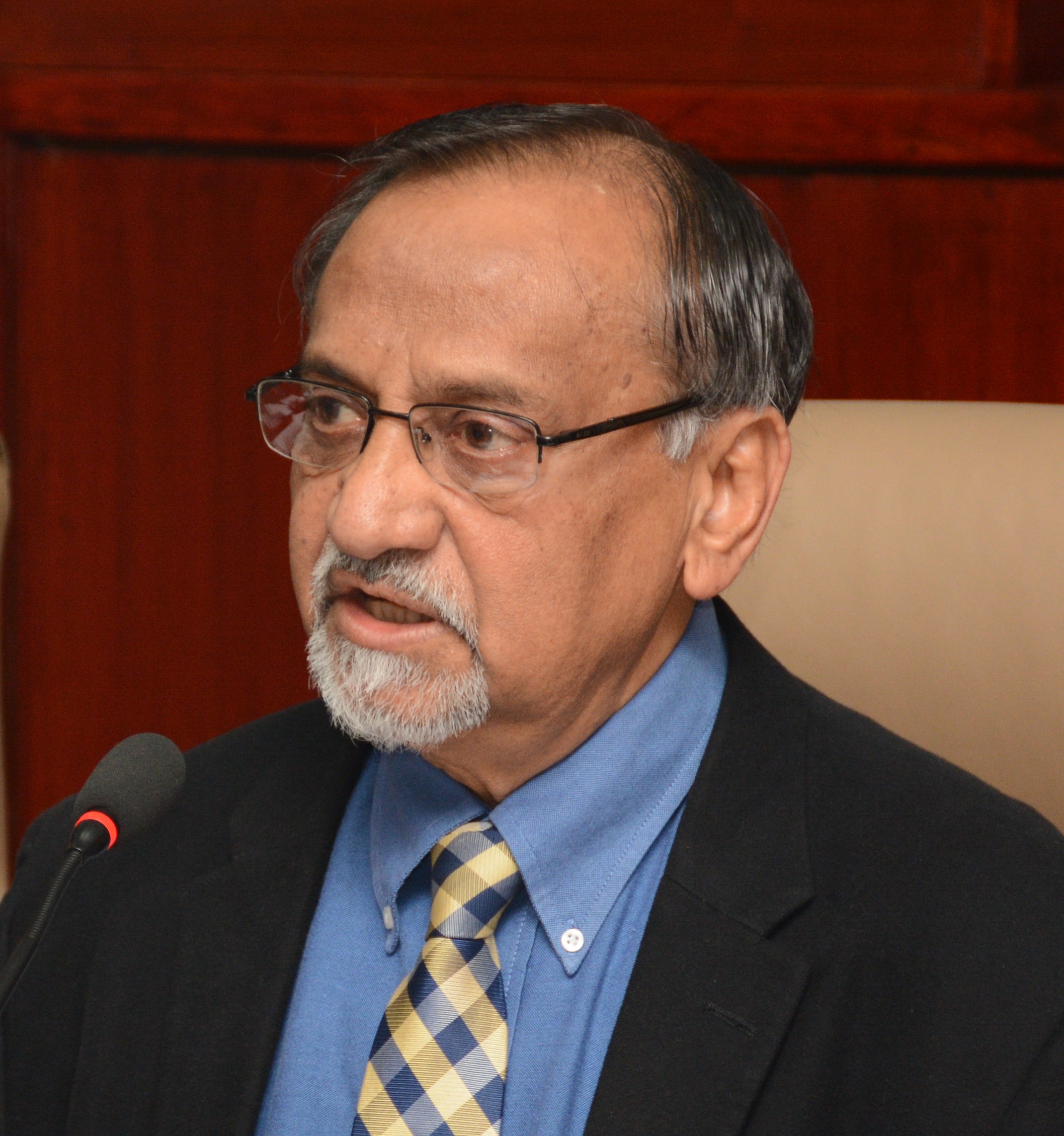
Prof Bishwambher Pyakuryal taught Economics at Tribhuvan University for nearly four decades. He holds Masters and Ph.D. in Economics from Tribhuvan University and Masters in International Affairs majoring in Development Studies from Ohio University, USA. As a Senior Fulbright Scholar he has also completed Post-doctoral Research in Economics from the University of Maryland, USA. Dr. Pyakuryal served as Chairman of Nepal Industrial Development Corporation (NIDC); a member of the board of Nepal Rastra Bank; a member of Trade Advisory Committee headed by the Prime Minister, and a Commissioner of the Independent South Asian Commission on Poverty Alleviation of SAARC, among others. He has written, co-authored and edited thirteen books and published research articles in accredited national and international journals. He has also worked as an international consultant to various bilateral and multilateral agencies. A former Nepali ambassador to Sri Lanka, Prof Pyakuryal is currently serving as Chairman of the Institute for Strategic and Socio-Economic Research – a think tank. The veteran economist spoke to Fiscal Nepal in an exclusive interview. Excerpts:
How do you see the current state of Nepali economy? How long do you think the ongoing economic slowdown will last?
The real GDP growth was lowest since FY2020. The World Bank estimates show the decline at 1.9 percent in 2023. The key issues for slow growth were tight monetary policy and import restriction. Although Nepal added 500 MWs of hydroelectric power in national grid, the country is still a net importer.
During the first three months of the current FY (mid-October 2023-24) the total expenditure of the Nepal Government stood at Rs.280.57 billion. Compared to other expenses, capital expenditure is much less than one could expect.
The recurrent expenditure, capital expenditure and financial expenditure amounted to Rs. 213.39 billion, Rs.17.83 billion and Rs.49.35 billion respectively in the review period. Nepal’s revenue is import-based. Available data shows more than half of total revenues are trade related and this is the front which needs massive reforms through trade facilitation measures. It is alarming to note that the fiscal deficit has doubled to 6.1 percent of GDP and because of weak fiscal performance, public debt has increased to 41.3 percent of GDP.
Reduced capital expenditure and revenue underperformance contributed to lower public investment. The World Bank reveals that total investment decreased by more than 10 percent. The irony is private consumption was high as a result of increased remittances. Domestic economy is fragile. Policy failures have led to severe trust deficit between the people and the ruling government.
On the external front, Nepal Rastra Bank data show that remittance inflows increased 30 percent in the review period i.e., three months’ data ending mid-October 2023-24. However, the persistence increase of CPI-based inflation, which is now 7.50 percent has been affecting people’s real disposable income and private consumption.
The current account remained at a surplus. So did Balance of Payments (BOP), which registered a surplus. Both remain higher than previous year. Gross foreign exchange reserves increased 6.7 percent. Therefore, the foreign exchange reserves of the banking sector are sufficient to cover the prospective merchandise imports of 12.4 months.
The central bank in its mid-term evaluation has loosened monetary policy. The government has lifted import restrictions. If goods import increase, agriculture sector’s performance is better and debt servicing liability can be managed through fiscal reforms. The estimates of growth at 3.9 percent in FY24 and 5 percent in FY25 can be realized. In short, Nepal’s state of economic development is mixed.
In Nepal, economic slowdown seems to continue longer as the real GDP growth has declined and the country has been plunged into its first recession in six decades in 2023. The negative performance of the economy in the second quarter of FY23 was triggered by slow trade and deceleration of the construction and mining sectors. The main villain is the political uncertainty, institutionalized corruption, low paddy production and lumpy skin disease on livestock, rising market prices and reduced consumption of goods and services.
Based on historical data and expert analysis, the mild slowdowns in the Least Developed Countries (LDCs) has been estimated to last for 2-3 years. Moderate slowdowns in general last for 4-5 years and for severe slowdowns, it may take 5-10 years or even longer to recover. It’s important to note that these are just general estimates and the actual duration can be shorter or longer depending on specific circumstances of each individual country.
Nepal’s economy has not recovered to normalcy post-COVID. Both the government and Nepal Rastra Bank are trying to make the economy vibrant. What should be the priority now?
To make Nepal’s economy vibrant, the government needs to focus on strengthening fiscal policies and although difficult but should apply fiscal stimulus on priority basis. At the agriculture sector front, improving farming practices and increasing productivity should be the priority.
Recently, in the review of Monetary Policy, Nepal Rastra Bank has loosened monetary policy to stimulate growth. The external competitiveness can be improved by increasing domestic productivity and reducing the inflation differential with country’s trading partners. Usually, reducing inflation differential with trading partners requires a combination of monetary policies, productivity and competitiveness improvements, and fair trade practices.
There is a wide class divide, therefore, improvement in education system is essential. This may help reduce poverty challenges as well. The combination of fiscal and monetary policy, improvement in agriculture and education, and reduced political interference should help improve economy.
Nepal Rastra Bank has not been very successful facing challenges in promoting growth, for example, in reality, it has failed in providing direct credit for productive employment generation. There is no denying that a strong and sound financial system is important in mobilizing and allocating resources efficiently to make capital more productive.
The challenge is to build proactive measures to revitalize the economy amidst a deep recession. Ministry of Finance and Nepal Rastra Bank have been moving in opposite direction. The fiscal support to execute monetary policy should be provided without any delay.
Axiata, a Malaysian company, has announced that it has sold nearly 80 percent of its shares in Ncell to a British company owned by an NRN leading to a fresh controversy in Nepal. What could be its impact on foreign investment scenario?
Unless overlapping institutions to oversee Ncell is reduced and the actual report of the committee constituted by the government is made public based on the terms of reference of the agreement, it will create confusion by indirectly discouraging prospective investors in future.
There still remains lots of confusion regarding the avoidance of capital gain tax, decision to divest without prior consent of Nepal Telecommunication and so forth. We need to wait and see until the picture is clear with transparent committee report. The case is with the parliamentary committee and also with the Supreme Court. Some have even gone to CIAA. Therefore, it will be early to make my personal remarks.
The government is preparing for another investment summit next year. Why is it that actual disbursement is much lower than the promises made during such summits?
The actual disbursements are often much lower than the commitments due to the nature of the commitment, which refers to the project cost over a period, while actual disbursements represent the funds released within a specific time frame. This difference is evident in various sectors, including foreign aid disbursements, where the total commitment for ongoing projects may not align with the actual disbursements.
In short, the discrepancy between commitments and actual disbursements can be attributed to the timing and nature of the financial processes.
Research suggests that higher political fragility, higher administrative expenses, perceived corruption in the recipient country, and lower GDP per capita are associated with lower disbursement rates relative to commitments.
There is a need for better aid flow reporting standards, clarity around aid types, and harmonizing systems to minimize the bureaucracy associated with aid delivery. Despite the decline in foreign aid commitments, it is essential to address these factors to ensure that the committed aid is effectively disbursed to support Nepal’s development.
Successive governments emphasize on economic diplomacy. Having served as Nepal’s ambassador to Colombo, what do you think the Nepal government should do to translate its words into action?
The government should prioritize economic diplomacy and accord it due importance. The State should focus on expanding its missions to attract investments and introduce investment-friendly Acts and legal provisions to create a favorable environment for investment. Nepal needs to boost exports by working on trade facilitation.
As Nepal can play a significant role in supplying cheap and reliable hydro power in South Asia region, we should focus on green energy diplomacy. The institutional arrangements to promote economic diplomacy at the Ministry of foreign Affairs is poor.
Nepal’s foreign policy should prioritize promoting economic wellbeing and prosperity, contributing to global peace, harmony, and security. The government should work on good governance, democratic values, and security and stability, supporting inclusive, equitable economic growth, and a clean, resilient energy future. By prioritizing economic diplomacy and implementing suggested measures, the government can translate its words into action and promote Nepal’s economic growth.
Both donor and national governments are responsible for the poor performance of foreign aid in Nepal due to a mismatch of priorities. The politics and massive corruption have been negatively affecting the effective utilization of foreign aid.
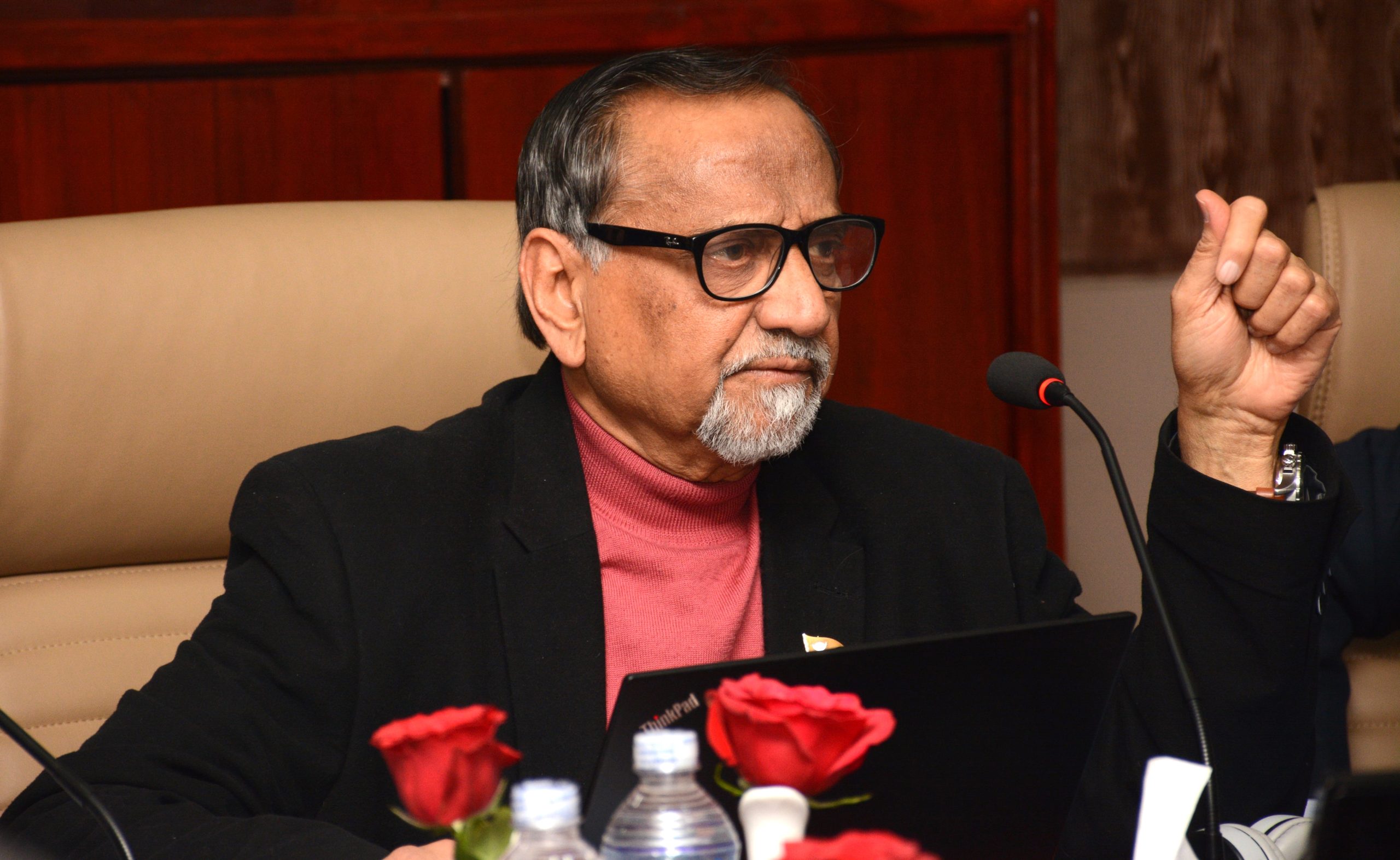
Foreign aid has not been effectively utilized for sustainable economic growth and poverty reduction.
Donors and Nepal government often operate with different fiscal years and have different conceptualizations of disbursement, leading to gaps in aid spending.
Also, aid provided to Nepal is often tied to specific projects, which can increase the costs of goods and services and administrative burdens on both donors and partners. Last, but not the least, a higher perceived corruption level in the recipient country can lead to lower disbursement rates.
To address these issues, Nepal needs to improve its aid utilization, enhance coordination with donors, and work on reducing administrative expenses and corruption.
Thousands of Nepali youths are leaving for the Gulf countries and elsewhere looking for a job. What do you think went wrong in our planning process that we are not able to create enough jobs within the country?
It is true that thousands of young and productive Nepalese are leaving the country as migrant workers. This phenomenon is driven by a complex interplay of factors, including planning failures.
Nepal’s economy has struggled to create enough formal jobs to keep pace with the growing population, particularly for young, educated people. This is due to factors like limited investment, lack of diversification in the economy, and inadequate skills development.
Many young people are drawn to the perceived better opportunities in cities, further straining urban infrastructure and resources. Poor infrastructure, including transportation, communication, and energy, hinders economic development and job creation in rural areas.
The loss of skilled and educated young people has weakened Nepal’s human capital base and hindered long-term economic growth. There are serious consequences of brain drain. Talented academics seeking better opportunities abroad can leave institutions with knowledge gaps and hinder knowledge transfer to students, creating brain-drain.
In addition to this, separation of families due to migration has social impact and creates negative social and emotional consequences for both the migrants and their families back home. Remittances are no doubt a vital source of income for many Nepali families, but they also create an unhealthy dependence on foreign earnings.
The key question is how to create employment opportunities? Improving roads, bridges, irrigation systems, and communication networks is an investment in infrastructure, which can open up new economic opportunities in rural areas. Providing access to finance, training, and market support can encourage young people to start their own businesses and create jobs. This requires promoting entrepreneurship and small businesses.
Moving beyond traditional sectors like agriculture and tourism by investing in manufacturing, technology, and renewable energy can create new and diverse job opportunities. Additionally, aligning education and training programs with the needs of the labor market can equip young people with the skills they need to succeed in the domestic market.
Addressing these planning failures and creating sustainable employment opportunities within Nepal is crucial to stem the tide of outward migration and build a brighter future for the country’s young people.
To add more on this, a focus on labor-intensive industries can be suggested. Nepal has a large and relatively cheap workforce, which can be an advantage in attracting labor-intensive industries such as garment manufacturing and food processing. Similarly, Nepal’s stunning scenery and rich cultural heritage make it a popular tourist destination. The government can do more to promote tourism and create jobs in this sector.
Higher academic institutions in the country are simply failing to provide quality education to youth and students. Is political interference the main reason or are there other factors as well?
Attributing blame solely to political interference for higher education’s perceived shortcomings is not fair. While political influence can be detrimental, a complex web of factors contributes to such outcome. The examples include; inadequate infrastructure as a result of chronic underfunding by the government, outdated resources, and overburdened faculty, compromising quality.
Curriculum revisions may lag behind industry demands, leaving graduates with outdated skills and struggling to adapt to the evolving job market. This is because of rigid curriculum. Also, overemphasis on rote learning and standardized tests can stifle critical thinking and creativity, crucial for success in the modern world.
We have failed in addressing a multi-pronged approach. Although the government has prioritized education in national budgets but the efforts in seeking alternative funding sources and poor policy in public-private partnerships has slowed down educational achievements.
In most of the government schools we have not focused on critical thinking such as encouraging active learning, research, and problem-solving to equip graduates with adaptable skills. The failure is also on faculty development, which is investing in faculty training and retention to attract and retain top talent.
Political interference can exacerbate these issues, but true reform necessitates addressing the systemic challenges that plague higher education as a whole.
South Korea and Nepal were almost at the same stage of economic development some six decades ago. What do you think Nepal should learn from South Korea’s economic miracle?
Nepal can learn several lessons from South Korea’s growth and development. South Korea’s experience offers insights into sustainable development, infrastructure provision, and transitioning to a dynamic knowledge economy.
There exists plenty of specific lessons. South Korea’s industrial development, particularly the growth of manufacturing, played a crucial role in its rapid economic growth. Nepal can benefit from focusing on industrial activity and expanding its manufacturing sector.
Nepal could also benefit from adopting Korean technology and attracting investments to boost its development activities. Korea’s robust economic performance was fueled by significant export growth. Nepal can consider strategies to promote and support its export sector for economic development.
The Bank of Korea has expressed willingness to expand cooperation and friendship with Nepal, offering potential opportunities for knowledge sharing and support.
To conclude, Nepal can draw valuable lessons from Korea’s experience in industrial development, technology adoption, export-led growth, and cooperation for its economic growth and development.
How optimistic you are towards Nepal’s future? What should we do as a society and a nation?
The new found optimism for promising future can be expected provided that there is a greater political stability, inclusion, good governance, and sustainable growth. Nepal is due to graduate from its current status as one of the world’s least developed countries in 2026.
To become a middle-income country by 2030, a UNESCAP study revealed that Nepal has to invest between 8 to 12 percent of GDP until 2020, well over a billion dollar annually, to adequately develop its infrastructure, however, Nepal failed to do so. I suspect it could only be a wishful thinking.
As a society and a nation, Nepal needs to streamline its projects, strategically invest in those projects, and push for a paradigm shift in the way the country manages development. The government and people of Nepal must unite in their determination for betterment and embrace the added responsibility of ensuring irreversible and sustainable graduation. We can still be optimistic about Nepal’s future because ‘there is always tomorrow’.



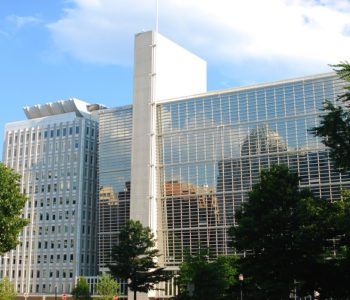





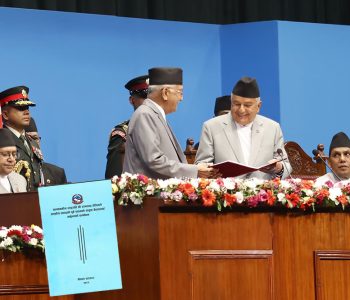

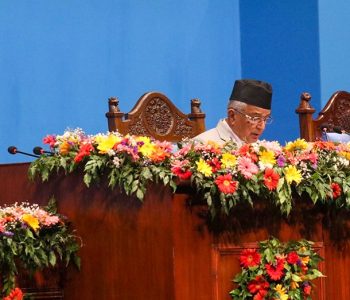
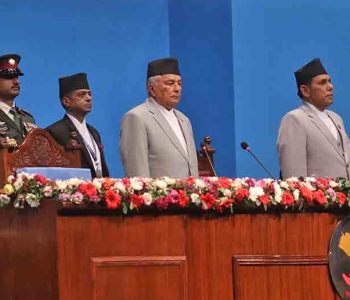
Facebook Comment